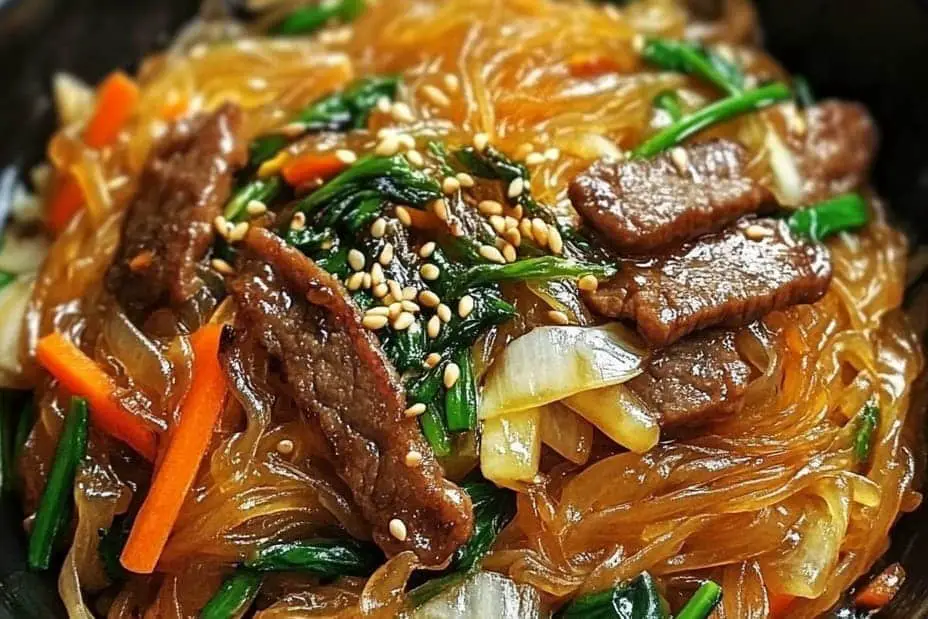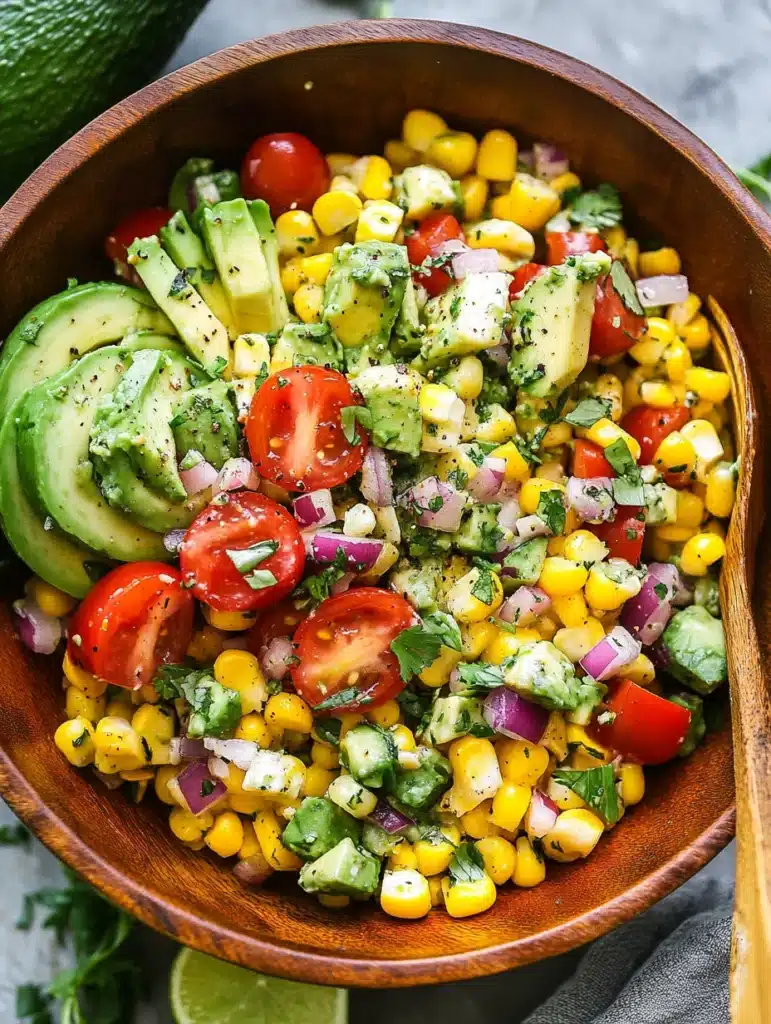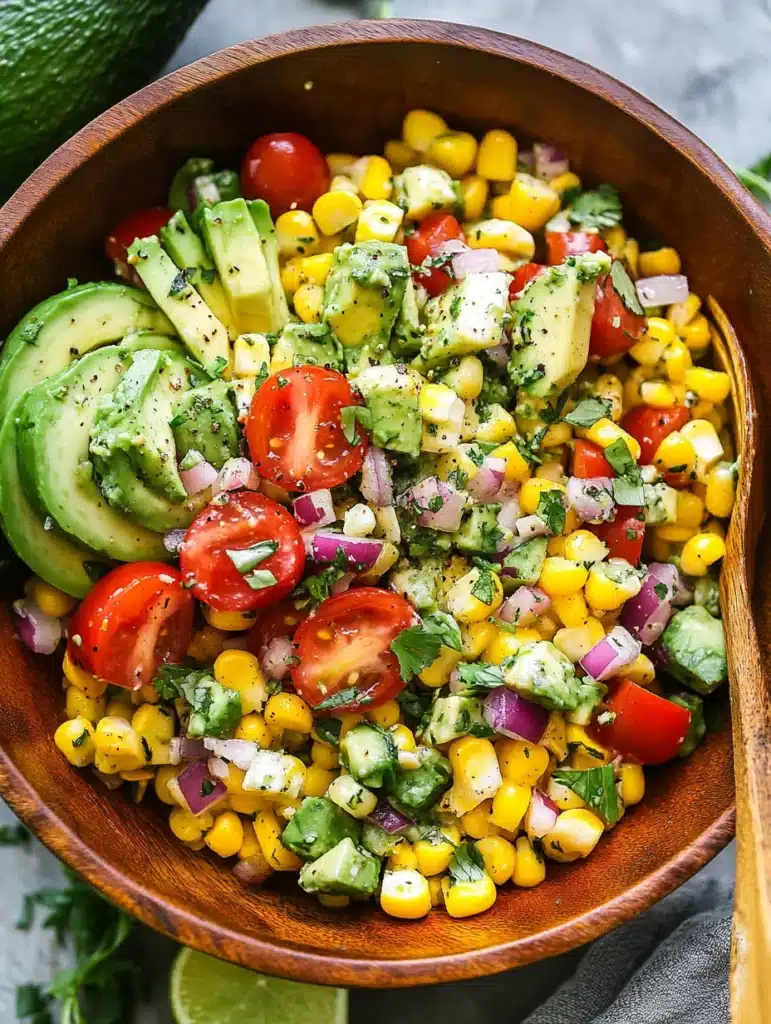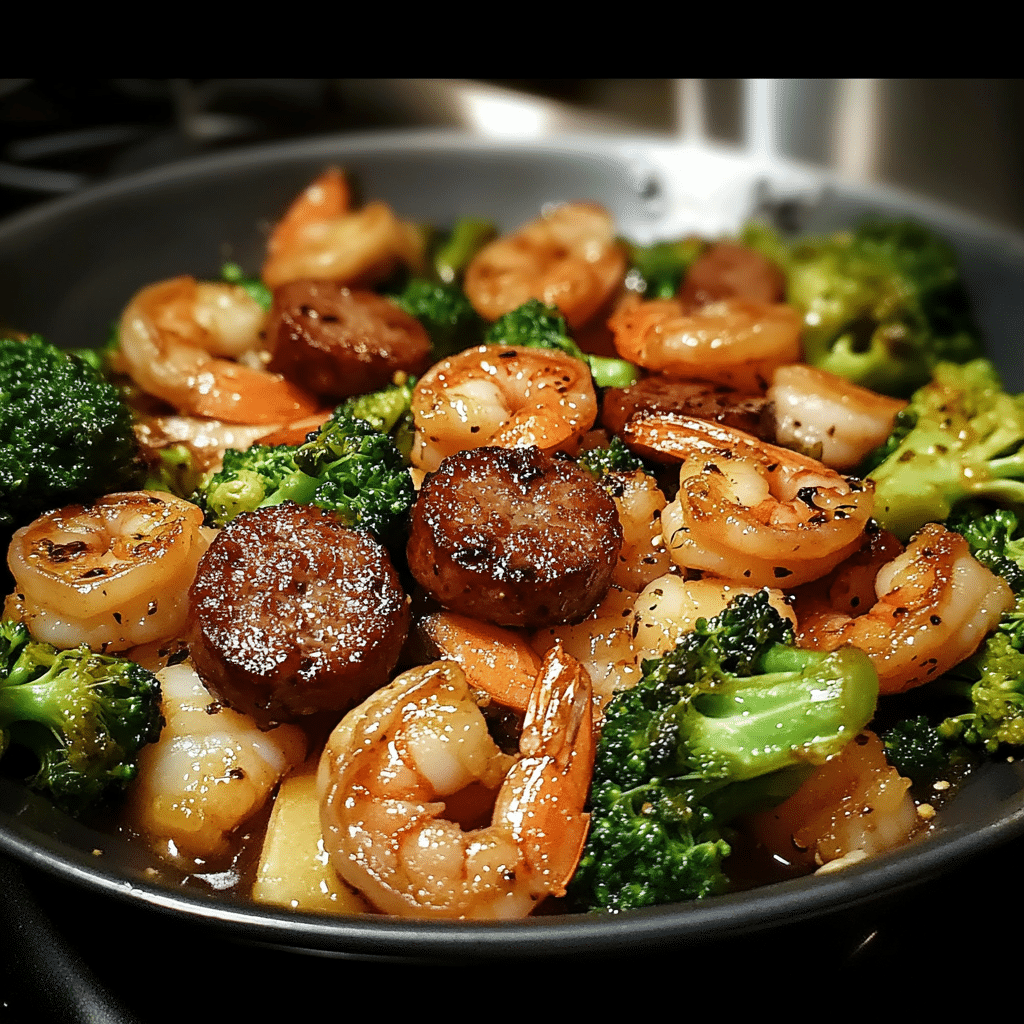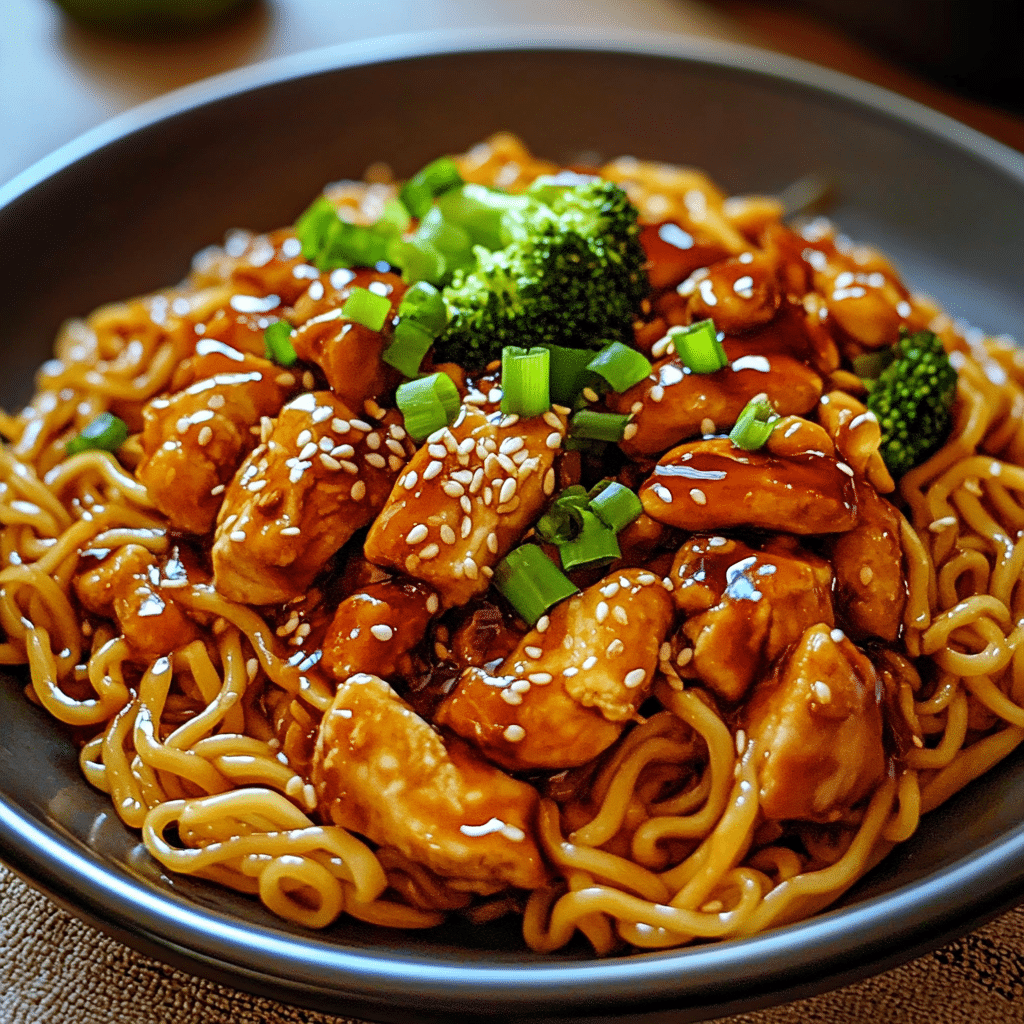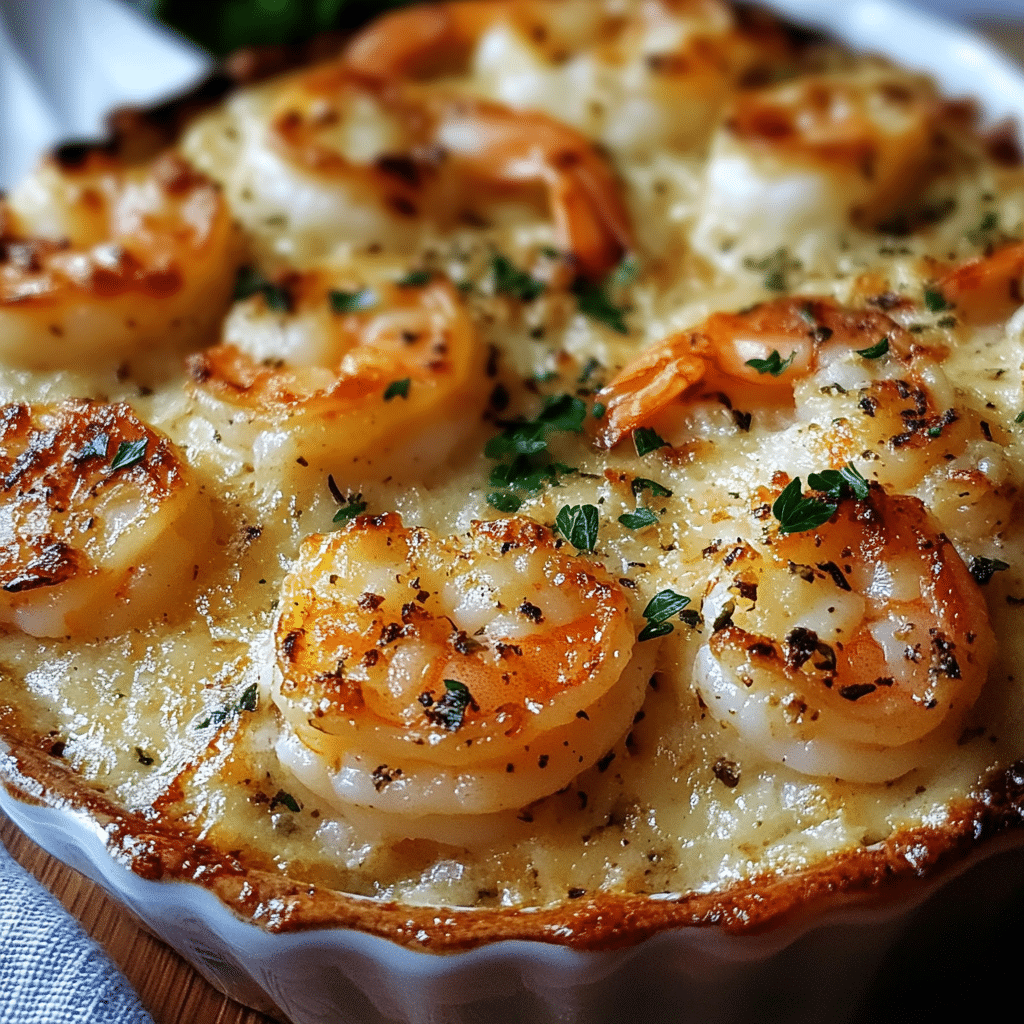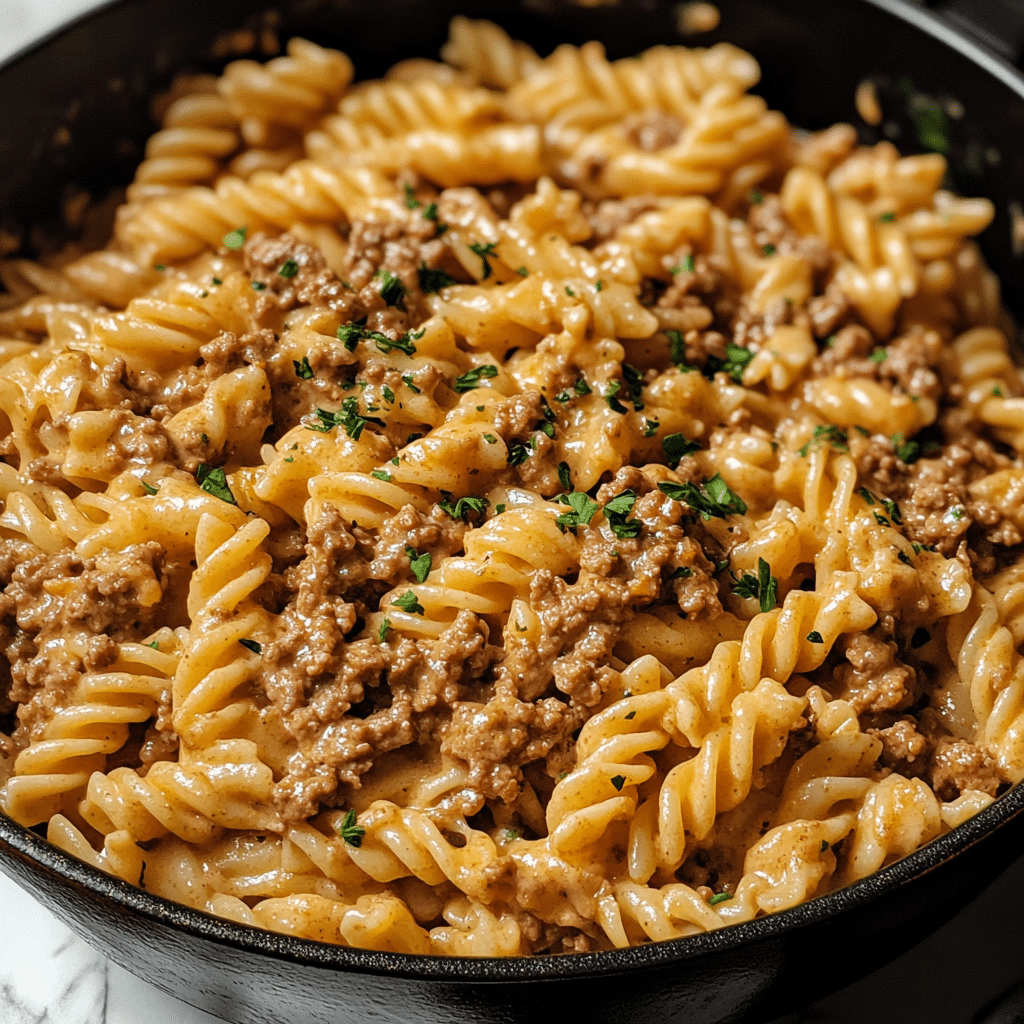Japchae is a colorful and savory Korean stir-fry that delights the palate with its unique blend of flavors and textures. This dish is a staple in Korean cuisine, known for its glossy sweet potato noodles, vibrant vegetables, and a hint of sweetness from the sauce. It’s often served during festive occasions and gatherings, showcasing not only the culinary wonders of Korea but also the art of balance in flavors. When prepared right, each bite of Japchae offers a symphony of tastes and a visual feast, making it truly irresistible.
If you’ve ever tasted Japchae, you’ll understand why it’s such a cherished dish. The chewy texture of the glass noodles, combined with fresh vegetables and tender meat (if included), creates an impressive dish that’s both satisfying and fulfilling. What’s more, its versatility allows it to be enjoyed as a side dish or a main course, making it perfect for any meal. In this article, we’ll take a journey through the preparation and cooking ofJapchae, ensuring you learn why it’s one of the most beloved dishes in Korean cuisine.
Let’s delve deeper into the amazing elements that make Japchae a must-try dish. From its simplicity in ingredients to its complex layering of flavors, you’ll find that making this dish is not only easy but also rewarding. Whether you are preparing a meal for family, hosting friends, or simply treating yourself, Japchae will impress everyone at the table.
Why You’ll Love This Recipe
There are countless reasons to adore Japchae. Here are some highlights that illustrate why this dish is a favorite among many:
1. Versatile Ingredients: You can customize Japchae to suit dietary preferences. It can easily be made vegetarian or vegan by omitting meat and adding more vegetables.
2. Quick and Easy: With prep and cooking time totaling around 30 minutes, you can whip up this dish even on a busy weeknight.
3. Nutritious: Packed with vegetables, Japchae offers a well-rounded meal full of vitamins and minerals.
4. Flavor Explosion: The combination of sautéed veggies, chewy noodles, and the savory-sweet sauce creates an explosion of flavors that tantalizes your taste buds.
5. Beautiful Presentation: The colorful array of ingredients makes for an eye-catching dish that will impress any guest.
6. Leftovers are Delicious: Japchae keeps well in the refrigerator, and the flavors often intensify after a day, making it great for meal prep.
7. Cultural Experience: Preparing and enjoying Japchae allows you to engage with Korean culture, offering a unique culinary experience beyond typical stir-fries.
With these wonderful factors, it’s clear why so many love this dish. Japchae brings joy and satisfaction not only through its taste but also through its vibrant presentation.
Preparation and Cooking Time
Making Japchae is quick and straightforward, taking approximately 30 minutes from start to finish. Here’s a breakdown of the time involved:
– Preparation Time: 15 minutes
– Cooking Time: 15 minutes
These estimations may vary slightly depending on your kitchen experience, but this timing is perfect for anyone looking to create a delicious meal without a lengthy commitment.
Ingredients
– 8 ounces sweet potato (glass) noodles
– 1 tablespoon vegetable oil
– 1 medium onion, sliced
– 1 carrot, julienned
– 1 bell pepper, sliced (colored ones make it visually appealing)
– 1 cup spinach (fresh or blanched)
– 2-3 green onions, chopped
– 2 cloves garlic, minced
– 1 tablespoon sesame oil
– 3 tablespoons soy sauce
– 1 tablespoon sugar
– 1 teaspoon sesame seeds (optional, for garnish)
Step-by-Step Instructions
Creating delicious Japchae at home is a snap with these simple steps:
1. Prepare Noodles: Soak sweet potato noodles in hot water for about 30 minutes until softened. Drain and set aside.
2. Sauté Vegetables: Heat vegetable oil in a large skillet over medium heat. Sauté onions and garlic for about 2 minutes until fragrant.
3. Add Carrots and Bell Peppers: Stir in the julienned carrots and bell peppers. Cook for an additional 3-4 minutes until they start to soften.
4. Mix Noodles: Add the softened sweet potato noodles to the skillet, tossing with the vegetables.
5. Season: In a small bowl, mix soy sauce, sugar, and sesame oil. Pour the mixture over the noodles and toss everything together until the noodles are coated.
6. Add Spinach and Green Onions: Gently stir in the spinach and chopped green onions. Cook until the spinach wilts, about 2 minutes.
7. Garnish and Serve: Remove from heat, transfer to a serving dish, and sprinkle with sesame seeds to garnish.
Following these steps will yield an incredible Japchae that you and your loved ones will rave about.
How to Serve
When it comes to serving Japchae, there are a few considerations to elevate the experience:
1. Presentation: Arrange Japchae in a large serving dish or individual bowls to showcase its vibrant colors.
2. Garnishes: Add fresh herbs like cilantro or a dash of chili flakes for an extra kick.
3. Accompaniments: Serve with kimchi and rice for a complete Korean meal experience.
4. Pairing: Japchae pairs well with light beverages such as green tea or soju for an authentic dining experience.
By keeping these serving tips in mind, you can ensure that your Japchae not only tastes incredible but also looks magnificent on the table.
In conclusion, Japchae is more than just a dish; it’s a celebration of flavors, textures, and colors that truly depicts the essence of Korean cuisine. With its incredible taste and simplicity, it is certainly a recipe you’ll want to keep in your cooking arsenal. Happy cooking!
Additional Tips
– Use Fresh Ingredients: Fresh vegetables enhance the flavor and texture of your Japchae. Always pick vibrant, seasonal produce for the best taste.
– Proper Cooking Techniques: Avoid overcooking the noodles. They should be chewy, so ensure you soak them just until they’re soft.
– Adjust Flavor: Feel free to tweak the soy sauce and sugar based on your taste preference. Some enjoy a bolder flavor, while others prefer it milder.
– Serve Warm: Japchae is best enjoyed warm right after it’s been cooked. Its flavors are at their peak at this time.
– Add Protein: For a heartier meal, incorporate marinated beef, chicken, or tofu to make it more substantial.
Recipe Variation
Explore these exciting variations for a unique twist on the traditional Japchae:
1. Seafood Japchae: Add shrimp or squid for a delightful seafood option. Sauté them with the vegetables for additional flavor.
2. Spicy Version: Incorporate gochujang (Korean red chili paste) for a spicy kick. Adjust according to your heat preference.
3. Sweet Potato Addition: For a twist, include chunks of sweet potato for added sweetness and texture.
4. Vegan Delight: Omitting meat and adding extra tofu or other vegetables can make this dish fully vegan without sacrificing taste.
Freezing and Storage
– Storage: Store leftover Japchae in an airtight container in the refrigerator. Consume within 3-4 days for the best flavor.
– Freezing: You can freeze Japchae in freezer-safe containers for up to 3 months. Thaw in the refrigerator overnight before reheating.
– Reheating: When reheating, add a splash of water or vegetable broth to retain moisture. Heat gently to prevent the noodles from becoming mushy.
Special Equipment
The following kitchen tools can streamline your Japchae preparation:
– Large Skillet or Wok: Essential for making stir-fries, allowing even cooking of all ingredients.
– Mixing Bowls: Use for combining sauce and for soaking noodles.
– Cutting Board and Knife: Necessary for slicing vegetables and preparing ingredients effortlessly.
– Tongs or Wooden Spoon: For tossing the noodles and ensuring everything is mixed evenly during cooking.
Frequently Asked Questions
What type of noodles can I use for Japchae?
Sweet potato glass noodles are traditional, but you can also use rice noodles or even regular wheat noodles if they are what you have on hand.
Can I make Japchae ahead of time?
Yes, you can prepare it ahead of time. Simply store it in the refrigerator and reheat before serving. The flavors often improve after a day or so.
Is Japchae gluten-free?
If you use gluten-free soy sauce and ensure that all other ingredients are gluten-free, Japchae can be adapted to be gluten-free.
What other vegetables can I add?
Feel free to incorporate mushrooms, zucchini, or broccoli for more variety. Japchae is very adaptable based on your preferences and what’s available.
Can I serve Japchae cold?
Yes, it’s not uncommon to serve Japchae cold or at room temperature as a refreshing dish, especially for summer gatherings.
Conclusion
Japchae is not just a stir-fry; it’s a festival of flavors, colors, and textures that showcases the richness of Korean culinary heritage. With its balance of savory and sweet, alongside the chewy glass noodles and fresh veggies, it’s a dish that is as enjoyable to prepare as it is to eat. Whether you’re making it for a special occasion or as a comforting weeknight meal, this recipe is sure to impress and satisfy. Enjoy your cooking adventure!
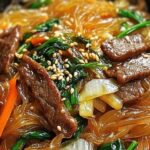
Japchae: An Incredible Ultimate Recipe with 7 Amazing Ingredients
- Total Time: 30 minutes
Ingredients
– 8 ounces sweet potato (glass) noodles
– 1 tablespoon vegetable oil
– 1 medium onion, sliced
– 1 carrot, julienned
– 1 bell pepper, sliced (colored ones make it visually appealing)
– 1 cup spinach (fresh or blanched)
– 2-3 green onions, chopped
– 2 cloves garlic, minced
– 1 tablespoon sesame oil
– 3 tablespoons soy sauce
– 1 tablespoon sugar
– 1 teaspoon sesame seeds (optional, for garnish)
Instructions
Creating delicious Japchae at home is a snap with these simple steps:
1. Prepare Noodles: Soak sweet potato noodles in hot water for about 30 minutes until softened. Drain and set aside.
2. Sauté Vegetables: Heat vegetable oil in a large skillet over medium heat. Sauté onions and garlic for about 2 minutes until fragrant.
3. Add Carrots and Bell Peppers: Stir in the julienned carrots and bell peppers. Cook for an additional 3-4 minutes until they start to soften.
4. Mix Noodles: Add the softened sweet potato noodles to the skillet, tossing with the vegetables.
5. Season: In a small bowl, mix soy sauce, sugar, and sesame oil. Pour the mixture over the noodles and toss everything together until the noodles are coated.
6. Add Spinach and Green Onions: Gently stir in the spinach and chopped green onions. Cook until the spinach wilts, about 2 minutes.
7. Garnish and Serve: Remove from heat, transfer to a serving dish, and sprinkle with sesame seeds to garnish.
Following these steps will yield an incredible Japchae that you and your loved ones will rave about.
- Prep Time: 15 minutes
- Cook Time: 15 minutes
Nutrition
- Serving Size: 4
- Calories: 350 kcal
- Fat: 12g
- Protein: For a heartier meal, incorporate marinated beef, chicken, or tofu to make it more substantial.

